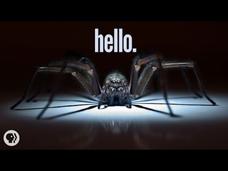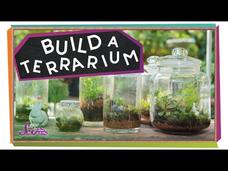TED-Ed
A Brief History of Video Games (Part I)
For many pupils, gaming is part of everyday life. But, it wasn't always that way. Entertain and inform your class with this quick video that follows the development of video games. The narrator goes all the way back to the beginning and...
TED-Ed
The Operating System of Life
How is a factory of robots similar to a cell? Examine cell structure, specialization, communication, replication, and more through the lens of a robot factory. Cell metaphors can be a fun concept as an assignment; after watching the...
NASA
The Anatomy of a Raindrop
After reviewing the water cycle, zoom in on a raindrop and learn about the physics determining its shape. See actual footage of raindrops falling with high-speed photography! A written description of the same information is also provided...
TED-Ed
What Happens When You Remove the Hippocampus?
Imagine not being able to remember what day it is or what food you had for breakfast this morning. This nightmare was a reality for Henry Molaison, whose life story is the focus of this video explaining how different parts of the...
TED-Ed
Why Do We Pass Gas?
Flatulence is a fact of life. But what exactly is happening in our bodies that produces this excess gas? Find out with this entertaining, yet educational, video that explores the different types of bacteria that aid digestion and the...
statisticsfun
How To Calculate Conditional Probability Boxes With Defects
Branch out with a tree diagram. A presentation on complex probability explains the process of creating a tree diagram to represent the possible outcomes in a scenario. It then uses the diagram to calculate the probabilities of each of...
TED-Ed
The Physics of Playing Guitar
Everyone knows that guitar music rocks - but why? And how? Learn about the ways a single pluck can create sounds that resonate from string, to ear, to soul with a fascinating video about the physics of sound vibration.
MinutePhysics
How to Simulate the Universe on Your Laptop
Ever grow tired of the traditional uses for laptops? Try this fascinating simulated universe! The video shows a 3-D version of the Millennium Run, then backs it up with a simpler version created in free Adobe software. Young physicists...
TED-Ed
What’s the Smallest Thing in the Universe?
Quarks have some interesting features—including their names! Young scholars learn about up, down, strange, charming, bottom, and top quarks in an engaging video presentation. The narrator begins with an overview of molecules and atoms,...
GCFGlobal.org
Excel 2016: Sorting
Sorting helps make sense of a lot of information at once. Using the 17th of 27 videos from the Microsoft Excel 2016 set, scholars learn about the types of sorting within an Excel spreadsheet. They explore sorting sheets and ranges,...
National Constitution Center
Separation of Powers
After the Revolutionary War, the Founding Fathers were in a pickle. They needed to create a government, but how could they protect the people from a tyrant? The separation of powers was their answer! A video resource explores the history...
PBS
Hot Shots and Hot Jobs: Software Engineers Create Solutions through Code
Tech is cool! That's the takeaway from a short video that details the challenges and rewards of being a software engineer.
PBS
Comparing Hemingway to Young Adult Literature
Challenge groups to create a recommended reading list of contemporary young adult fiction that explores the same themes found in Ernest Hemingway's short stories and novels. After examining a list Hemingway created and a list put...
Curated OER
How Do You Solve and Graph Inequalities from a Word Problem?
Are you befuddled after reading this word problem? Not only is it a word problem but there are two variables, and not only does it have two variables, but it is an inequality. Don't pull your hair out! Take a deep breath and watch this...
Khan Academy
More Mouse Interaction
Creating interactive programs can be very exciting for new computer programmers. The author shows how to use mouseIsPressed within a conditional statement to create a small JavaScript program that responds to the press of the mouse by...
Lifehacker
Learn to Code: Understanding Functions and Making a Guessing Game
Here's where it all comes together. Using the skills learned in the previous three videos, the final installment of this series on JavaScript explores how to create functions. By the end of the video, young programmers will be able to...
Bozeman Science
Position vs Time Graph - Part 2
The narrator os this video explains how to create a velocity-time graph from the position-time graph. He works through several examples after explaining the shapes of the position-time graphs.
Be Smart
Why I'm Scared of Spiders
Eighty-four percent of people have an irrational fear. This video focuses on a fear of spiders. It explains the different types of fear, the conditioning that creates fear, and the evolutionary advantage to these fears. It doesn't just...
Khan Academy
Object Types
Young coders learn how to use a function to create objects with similar properties and to allow for the creation of objects repeatedly with a short video that makes the point that coding with a function eliminates repetitions.
SciShow Kids
What Are Clouds Made Of?
What are clouds and what do they have to do with the three sates of matter? Water changes states as it evaporates from the ground to create clouds. Watch a video that explains the science behind clouds and the different types seen in the...
SciShow Kids
Build a Tiny Plant World!
How can you create and observe the water cycle in your own home? Learners discover how to create their own terrariums and observe the water cycle in a video that models the steps.
MinutePhysics
Tutorial: Simulating the Universe in After Effects
Create the universe on your laptop in just over five minutes! The video tutorial guides scholars step by step through the process of simulating the Millennium Run using Adobe After Effects. Watch as the narrator illustrates how density...
Veritasium
Supercooled Water - Explained!
Create instant ice by applying a little chemistry. Learners watch as the video instructor explains how water changes from liquid to solid state. Applying these principles, he then shows how it is possible for liquid water to change to...
American Chemical Society
The Chemistry of Fireworks
Experiment with chemical compounds to produce the colors in fireworks! The lesson instructor demonstrates how adding high temperatures to specific compounds creates a colorful reaction—the same one people use to create fireworks. This is...

























